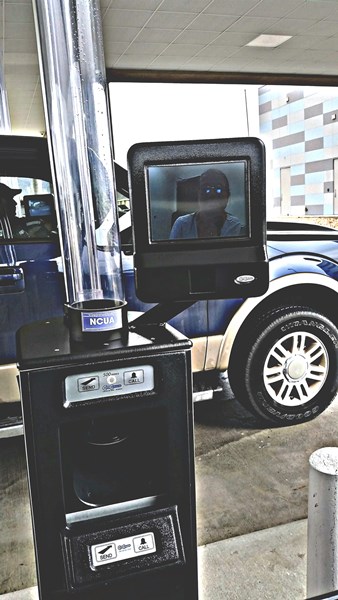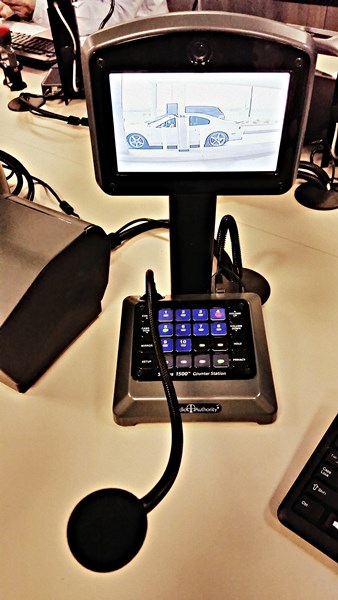Personal teller machines operate at the intersection of technological innovation and personal service. Machines provide convenient, efficient, and personal member transactions all while complementing branch sales.
Implementing this high-priced, powerful technology can be daunting, but two credit unions that have launched their own fleet of PTMs Navy Army Community, Park Community offer advice on how to manage the transition.
Tip No. 1: Create A Fraud Deterrence And Detection Plan
As a way to minimize the footprint of its property but maximize member service, in 2006, NavyArmy Community Credit Union ($2.2B, Corpus Christi, TX) launched virtual tellers at select drive-thru locations.
CU QUICK FACTS
NavyArmy Community Credit Union
data as of 12.31.14
- HQ: Corpus Christi, TX
- ASSETS: $2.2B
- MEMBERS: 135,994
- BRANCHES: 17
- 12-MO SHARE GROWTH: 11.93%
- 12-MO LOAN GROWTH: 5.31%
Today, drive-thru pedestals at eight of the credit union’s 17 branches offers this technology exclusively and NavyArmy has received such a positive response from members that it has plans to make the drive-thru machines a ubiquitous branch presencegoing forward. One teller can work up to four lanes at a time, depending on traffic. NavyArmy’s busiest PTM branch processes 30,000 drive-thru transactions per month.
It has made our member experience more personal, says Clare Green, vice president of remote operations at the credit union. Our members enjoy being able to see the teller.


On left: the credit union’s drive-thru personal teller machine. On right: video feed tellers use to communicate with members. Photos courtesy of NavyArmy.
The machines have a video feed that allows members to speak directly with tellers while using pneumatic tubes to transfer cash and documents back and forth. Tellers remain on-site in a closed room and talk with members via a video feed that allows themto quickly confirm the identity of the member.
The setup makes transactions speedier and communication clearer. In addition, the machines have reduced fraud. NavyArmy keeps the video feed on file for 90 days and can pull it to verify transactions or submit evidence to police. Members have 60 daysfrom the date they receive their statements to dispute the transaction. Fraudsters can steal or forge bank cards and other forms of identification, but video feeds allow the credit union to identify the perpetrator of the fraudulent transaction.
If I’ve got a video of Joe Smith, I am able to reduce the amount of fraud, Green says. I have much better collection techniques and recovery efforts.
According to Green, the credit union experiences approximately 15% less unrecoverable fraud at the drive-thrus with the video technology.
Tip No. 2: Train Employees To Use The Technology
In January 2015,Park Community Credit Union($689.3M, Louisville, KY) became the first credit union in Kentucky to open a branch with interactive teller machines(ITMs). Operating costs in Park Community’s 13 branches have been growing approximately 7% per year since 2011. With the implementation of these machines, Park Community hopes to slow that growth and increase efficiency.
The ITMs will be able to handle the transactional side of branches with fewer personnel, says Jim Spradlin, president and chief executive officer. That will allow us to emphasize the financial services side to help generate more loansand therefore income.
CU QUICK FACTS
park community Credit Union
data as of 12.31.14
- HQ: Louisville, KY
- ASSETS: $689.3M
- MEMBERS: 70,365
- BRANCHES: 15
- 12-MO SHARE GROWTH: 10.57%
- 12-MO LOAN GROWTH: 10.63%
The credit union created a four-person department to manage its ITMs; but as the position requires specialized skills, the credit union performs an additional layer of due diligence in the interview process by conducting interviews via video chat.
[It] can be a great tool to ensure candidates will be comfortable communicating with members remotely, says Bridgett Bossee, the ITM project lead at Park Community.
But implementing the right ITM staff requires more than FaceTime. Park Community’s multi-step process includes retail theater training to enhance on-camera presence as well as extensive interactive teller software training for internalhires with teller experience. External hires complete orientation and teller training, which includes working in a traditional branch for a minimum of two weeks, before starting the interactive teller training.
If a credit union plans to house ITM tellers in one location, Bossee says a nearby test machine is an invaluable training tool that allows tellers to experience the member side of the transaction.
We are reviewing the feasibility of stand-alone facilities for ITMs as a way to reach members and target markets where we don’t currently have a branch
On the member side, financial service representative greetbranch visitors at the door and walk first-time ITM users through the process and technology.
Since implementing its virtual teller strategy, Park Community has added 19 operating hours per week at its drive-thrus it now stays open as late as 8 p.m. on weeknights. During those extended hours, employees at a remote center staff the machines,which allows the credit union to operate a drive-thru without keeping the branch open.
Tip No. 3: Communicate The Value Of A Personal Connection
Park Community has grand plans for its ITMs. It is deploying machines in new branches including two that will open by mid-year 2015 and will evaluate their impact before it introduces them into existing branches or drive-thrus. The creditunion is also looking outside of the traditional brick-and-mortar opportunity.
We are reviewing the feasibility of stand-alone facilities for ITMs as a way to reach members and target markets where we don’t currently have a branch, says Spradlin.
ITMs provide convenience and accessibility for members, but even as Park Community continues to adopt ITM technology, it believes brick-and-mortar locations will remain important to the future of credit unions. As digital and physical channels continueto blend, member expectations will change. According to Spradlin, they will want the convenience of the electronic experience without losing a personal touch. The credit union has that covered.
The ITMs allow us to offer both, he says.
To communicate the value of this technology to staff, the credit union has been upfront in telling employees that ITMs are not a threat to jobs, they are an opportunity for advancement. In addition to creating a new ITM department, the credit union hasreassigned staff members to new areas in the organization with advancement opportunities. Plus, member service representatives who decide not to stay on as in-branch tellers can apply to transfer to the ITM department or move into the financial servicesarea in new branches.
The staff have responded to being with a company that is being innovative and implementing the newest technology, says Sharon Thompson, senior vice president of human resources.That makes the credit union an appealing placeto work for the newer generations and solidifies and validates our selection as a best place to work in Kentucky.
Additional reporting by Marc Rapport.